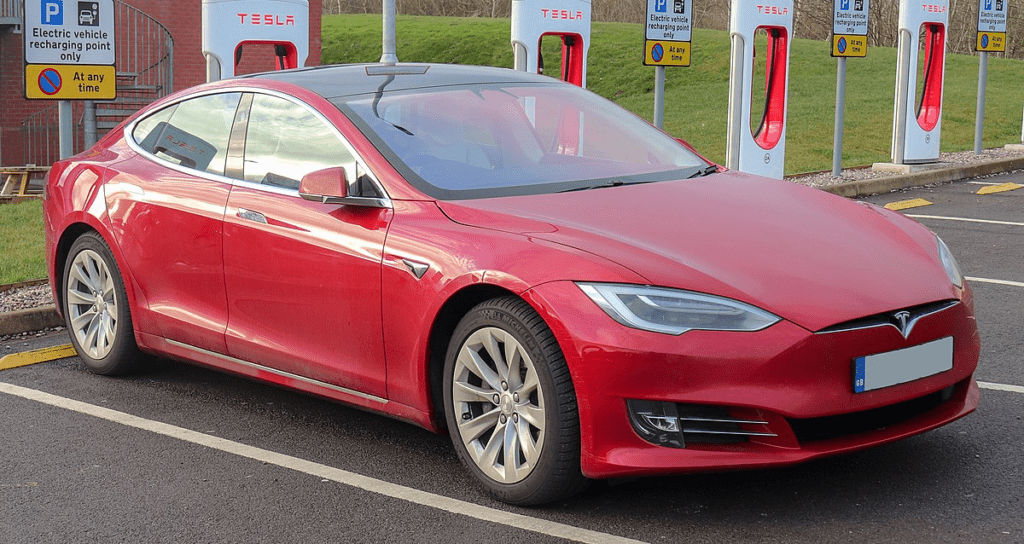Introduction – Green Vehicles
According to Wikipedia a “vehicle” is a:
mobile machine that transports passengers or cargo. Most often vehicles are manufactured, such as bicycles, cars, trucks, buses, motorcycles, trains, ships, boats and aircraft

Then “green vehicles” are:
road motor vehicles that produces less harmful impacts to the environment than comparable conventional internal combustion engine vehicles running on gasoline or diesel

Below is our take on the world’s seven greenest vehicles. We summarize the carbon emissions in this handy table. Note that carbon emissions of electric vehicles like cars, scooters and bicycles rely on the efficiency of the grid. In Scandinavian countries, Iceland, Brazil, France, parts of Canada, that rely on hydro and nuclear party, the carbon emissions will be very low. In others like South Africa and China, the emissions will be high. Everywhere else will lie on the spectrum. As such, these have a range of carbon emissions.
| Vehicle | Carbon emissions per passenger km |
| 8. Tesla Model S | 81 g CO2 / km |
| 7. Diesel bus | 35-85 g CO2 / km |
| 6. School bus | 20-50 g CO2 / km |
| 5. High speed rail | 10-60 g CO2 / km |
| 4. Urban light rail | 10-50 g CO2 / km |
| 3. Electric scooter | 4-30 g CO2 / km |
| 2. Electric bike | 5-30 g CO2 / km |
| 1. Bicycle | 10 g CO2 / km |
8: The Tesla Model S
Previously we called out the Nissan Leaf as the green vehicle. Times have changed and the Tesla Model 3 is now a widely known, paragon of electric vehicles. A huge chunk of global passenger kilometers are from automobiles, so better cars are hugely important for the future. Using low carbon electricity electric car emissions are down around 81 g CO2e/km. This figure is lower with car pooling.

Telsa cars have become very popular in the last few years. A community has grown up around this innovative company. For example, Tesla Track Day is a unique event that offers Tesla owners the opportunity to experience the power of their car on a professional racetrack. Tesla owners will get the chance to test the limits of their cars in a supportive and safe environment, with professional instructors on hand to provide guidance and support. As of 2023, there are now many more electric vehicle choices so don’t think Tesla is your only option.
7: The Intercity Coach
It may surprise you, but the typical Stagecoach or Greyhound diesel bus can often have lower emissions per passenger kilometer than the best electric car. That’s because intercity buses travel at efficient speeds on highways, have decent occupancy and tiny manufacturing emissions as they are spread over so many passengers. Studies suggest emissions are from 35-85 g CO2e/pkm.

6: The School Bus
This one is probably even more surprising, but school buses typically have quite low emissions. Not because they are über efficient, or that they do smooth highway miles, but simply because they have such high occupancy. Emissions per passenger kilometer are typically in the 20-50 g CO2e/pkm range. It’d be better if school buses were equipped with other features, such as advanced exhaust systems, that help to reduce emissions even further. And finally, if kids just walk to school then that’s one of the most carbon efficient ways of moving around!

5: High Speed Rail
High speed rail can be very low carbon, particularly with the right juice. We’ve taken the Eurostar and TGV from London down to the Pyrenees a couple of times with emissions about a tenth of what a flight would have been. The largely nuclear electricity in France means emissions of 17 g CO2e/pkm on their high-speed network. Typically emissions are from 10-60 g CO2e/pkm depending on fuel source. Additionally, high speed rail reduces congestion on roads and in the air, allowing more people to travel more distance in less time. This decreases the amount of fuel consumed, resulting in fewer carbon emissions. Finally, high speed rail reduces road noise pollution and improves overall air quality, making it a great option for low carbon emissions transportation.

China has also made great strides in the development of high speed rail technology in recent years. The country has built the world’s longest high-speed rail network, with more than 30,000 km of track in operation by the end of 2020. This network covers all major cities in the country and continues to expand, with plans to add another 10,000 km of track by 2025. The one criticism of China would be that they have a ways to go to reduce dependence on fossil fuels and that is reflected in a higher carbon intensity in the electrical grid due to more coal use.
4: Light Urban Rail
Any form of electric train can provide very low carbon miles if it has the right juice. Busy trams, metro or light rail systems can also have low emissions. The example below is from Bergen in Norway, where hydro power is dominant. Lifecycle emissions can range from 10-50 g CO2e/pkm depending on fuel source, efficiency and occupancy. Light urban rail systems are powered by electricity, which is a clean energy source that produces no emissions. Additionally, light urban rail systems typically have higher passenger capacities than buses and can move more people with fewer vehicles. This reduces the overall emissions of the transportation system, as fewer vehicles are needed to transport the same number of people.

3: The Electric Scooter
According to the International Association of Public Transport, there are currently over 90 million e-scooters in use worldwide. This number is expected to continue to rise as more people choose this convenient and eco-friendly form of transportation. The e-scooter is great for low carbon emissions transportation because it is a zero-emission mode of transport. This means that it does not produce any exhaust gases or other pollutants, making it an environmentally friendly way to get around. Additionally, it is an efficient form of transportation, as it can be used to cover short distances quickly and conveniently. Furthermore, it is relatively affordable, making it a cost-effective option for those who need to get around quickly and without the hassle of finding a parking space. Check out our related articles why e-scooters are great for carbon reduction and city living.

We have put together a top-level guide to electric scooters on our site as well, from which the reader will able to find topics of interest from specific bike reviews to accessories and maintenance tips.
2: The Electric Bike
200 million bikes are in China. Almost 30 million e-bikes will be sold in China this year alone. That is about half the number of passenger cars globally. In coal reliant China an electric bike has average lifecycle emissions of 22 g CO2e/pkm. Depending on fuel mix they are typically in the range of 5-30 g CO2e/pkm. There are different types, primarily hub e-bikes vs mid-drives. ShrinkThatFootprint is a fan of e-bikes and recommends e-bikes for every day use.

1: The Flying Pigeon Bicycle – the Ultimate of Green Vehicles
The ‘Flying Pigeon‘ is the most popular vehicle of all time. More than 500 million have been produced since 1950. Based on the 1932 Raleigh Roadster the popular model came in black, with one speed, 28 in (710 mm) wheels, a fully covered chain, sprung leather saddle, rear rack and rod brakes. This is an old school classic. In China, where the diet is relatively low carbon and electricity carbon intensive, this bike edges the eBike at around 10 g CO2e/pkm.

Lindsay Wilson
I founded Shrink That Footprint in November 2012, after a long period of research. For many years I have calculated, studied and worked with carbon footprints, and Shrink That Footprint is that interest come to life.
I have an Economics degree from UCL, have previously worked as an energy efficiency analyst at BNEF and continue to work as a strategy consultant at Maneas. I have consulted to numerous clients in energy and finance, as well as the World Economic Forum.
When I’m not crunching carbon footprints you’ll often find me helping my two year old son tend to the tomatoes, salad and peppers growing in our upcycled greenhouse.
